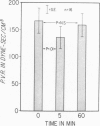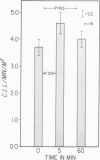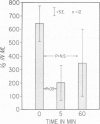Abstract
Increased pulmonary artery pressure, an increase in pulmonary vascular resistance and an increase in physiologic dead space are consistent findings in patients with post-traumatic respiratory distress. Since mannitol has been shown to decrease renal vascular resistance following trauma, the effect of a bolus injection of 100 ml of 25% solution of this drug on pulmonary hemodynamics and physiologic dead space was investigated in 11 patients who had suffered multiple trauma. Five minutes after the injection, pulmonary vascular resistance fell (p less than .01), cardiac index increased (p less than .001) and physiologic dead space decreased (p less than .05). In contrast, the administration of 40 mg of furosemide produced no significant change in any of these parameters. Mannitol rapidly equilibrates in the extracellular space and exerts an osmotic effect across cell membranes. We postulate that the beneficial response to mannitol on the pulmonary vascular resistance and the improved perfusion of ventilated regions of the lung is due to a reduction in cell swelling and is not explainable by its diuretic effect. Improvement in the distribution of perfusion of pulmonary blood flow by mannitol may be a useful aid in the treatment of the post-traumatic form of the respiratory distress syndrome.
Full text
PDF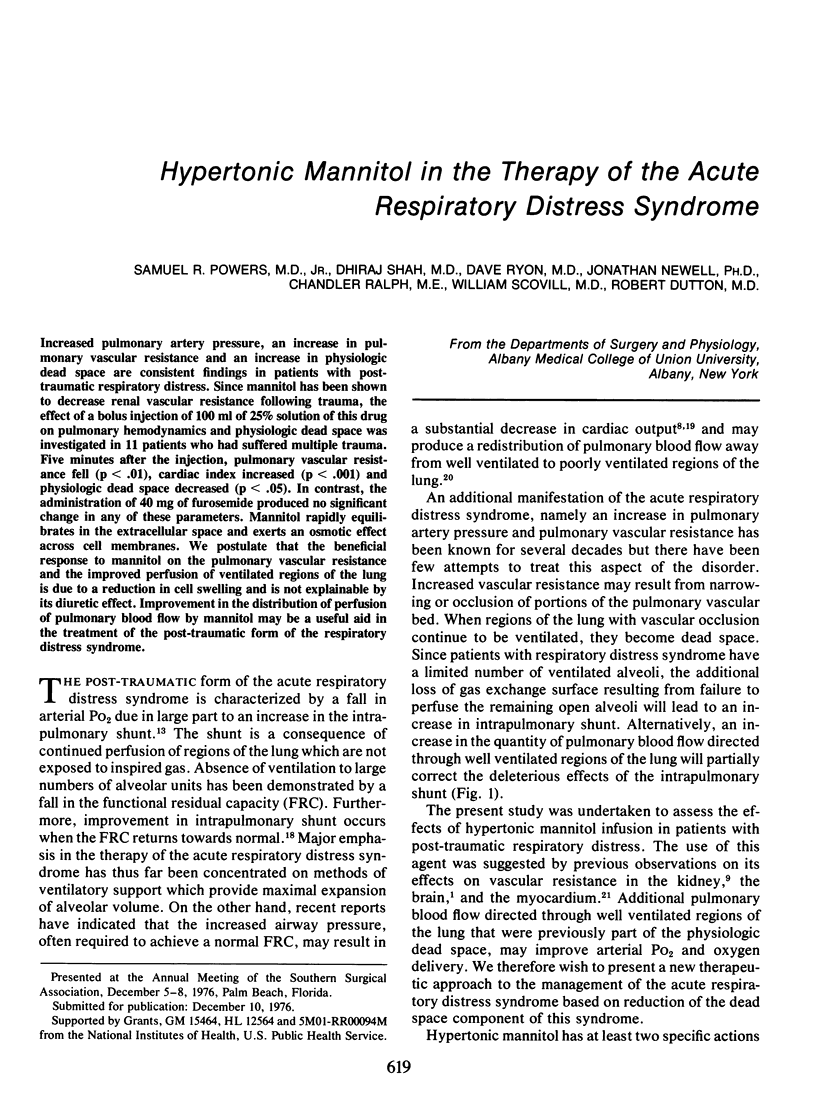
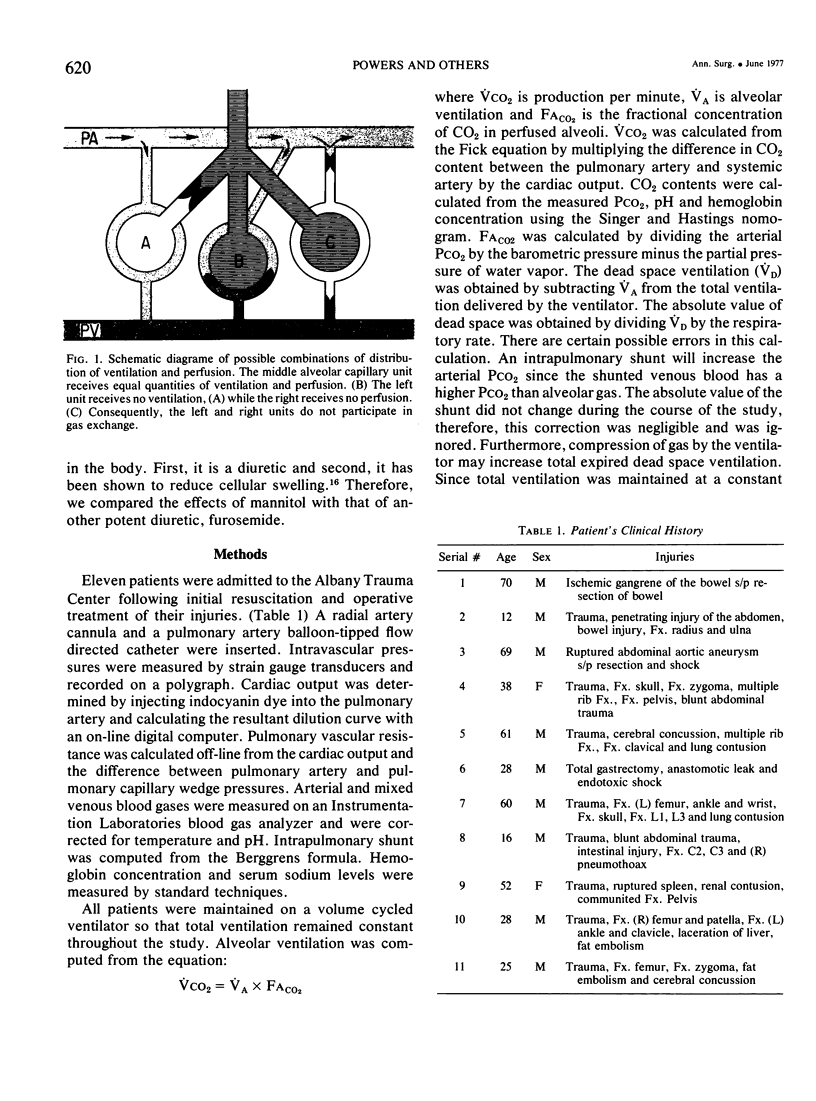
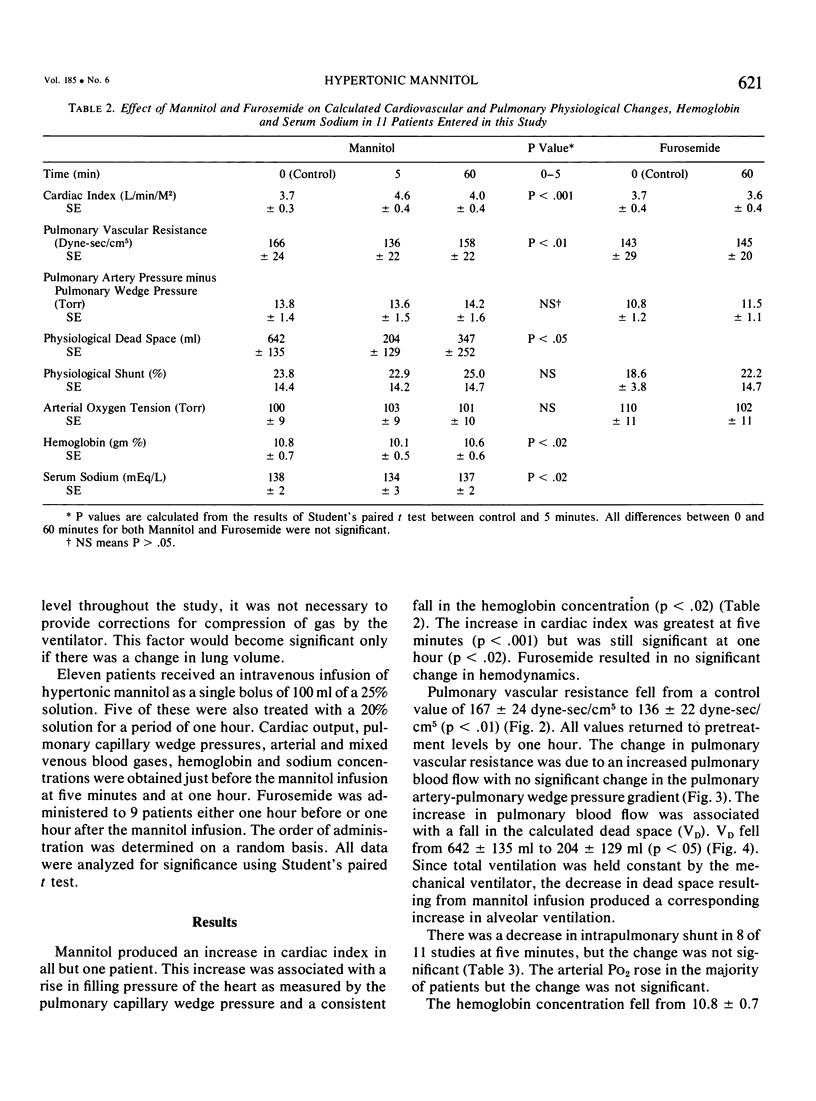
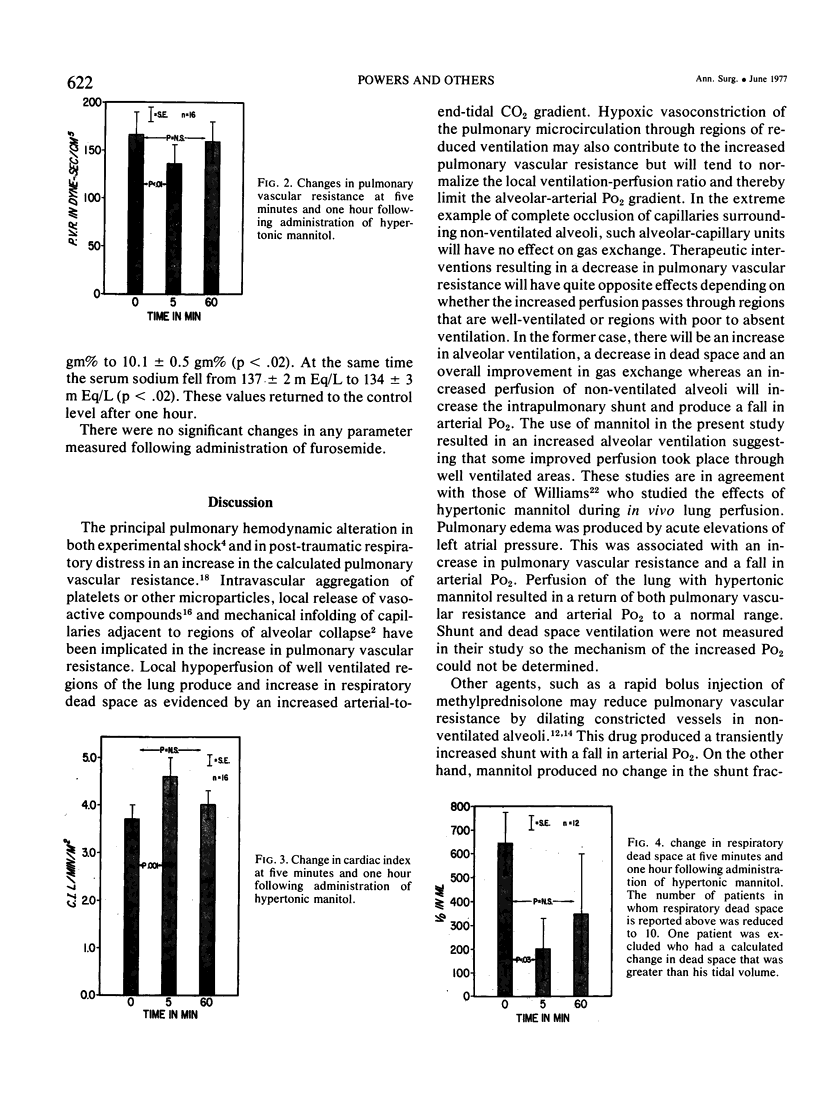
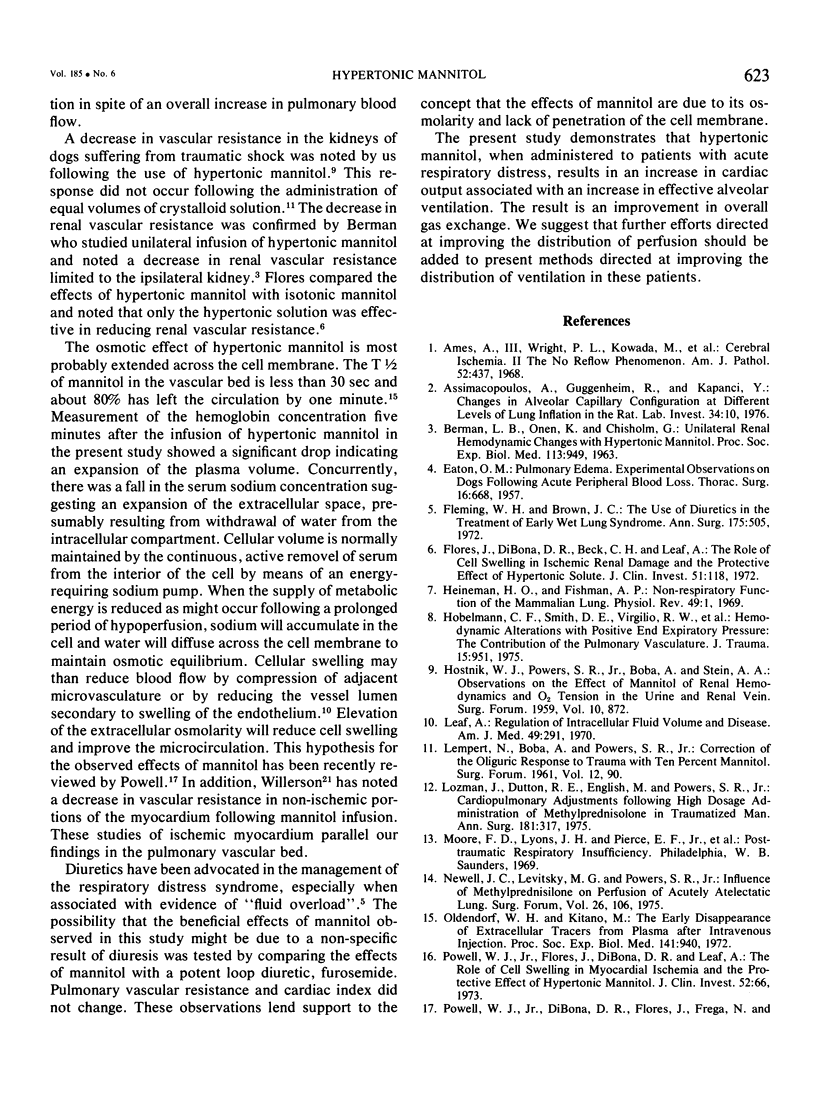
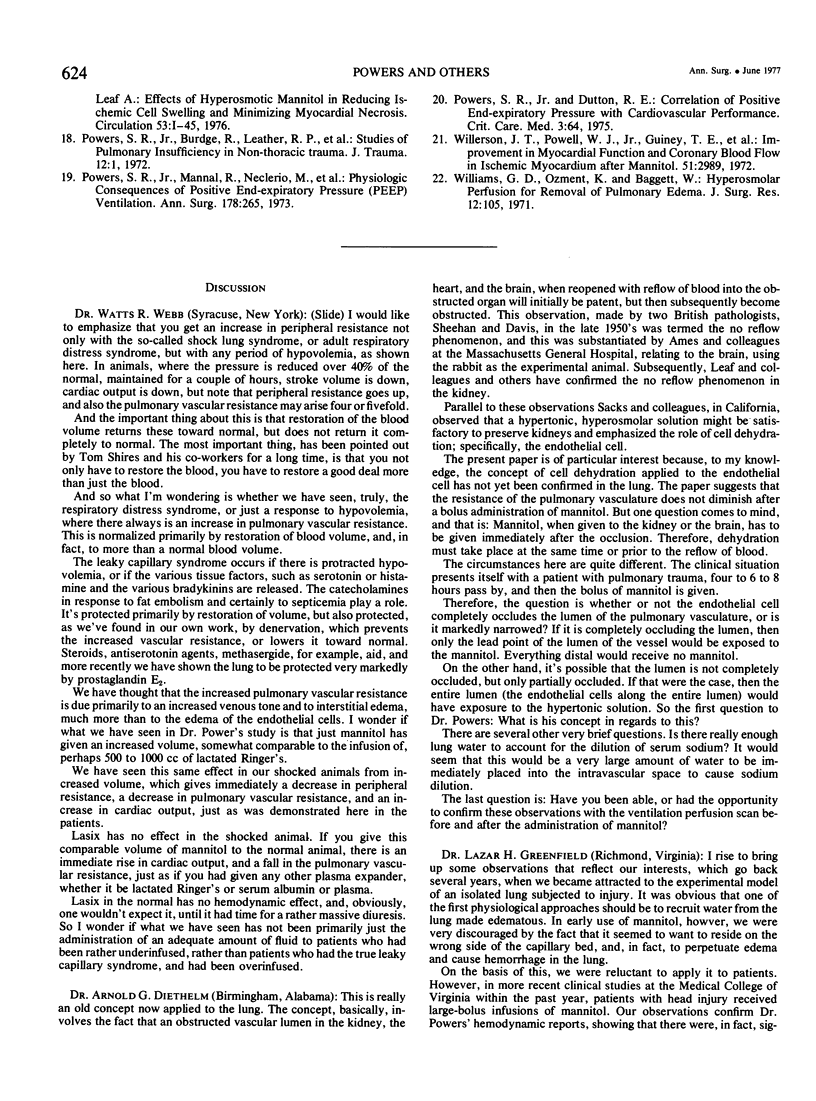
Images in this article
Selected References
These references are in PubMed. This may not be the complete list of references from this article.
- Ames A., 3rd, Wright R. L., Kowada M., Thurston J. M., Majno G. Cerebral ischemia. II. The no-reflow phenomenon. Am J Pathol. 1968 Feb;52(2):437–453. [PMC free article] [PubMed] [Google Scholar]
- BERMAN L. B., ONEN K., CHISHOLM G. UNILATERAL RENAL HEMODYNAMIC CHANGES WITH HYPERTONIC MANNITOL. Proc Soc Exp Biol Med. 1963 Aug-Sep;113:949–952. doi: 10.3181/00379727-113-28540. [DOI] [PubMed] [Google Scholar]
- Fleming W. H., Bowen J. C. The use of diuretics in the treatment of early wet lung syndrome. Ann Surg. 1972 Apr;175(4):505–509. doi: 10.1097/00000658-197204000-00008. [DOI] [PMC free article] [PubMed] [Google Scholar]
- Flores J., DiBona D. R., Beck C. H., Leaf A. The role of cell swelling in ischemic renal damage and the protective effect of hypertonic solute. J Clin Invest. 1972 Jan;51(1):118–126. doi: 10.1172/JCI106781. [DOI] [PMC free article] [PubMed] [Google Scholar]
- HOSTNIK W. J., POWERS S. R., Jr, BOBA A., STEIN A. A. Observations on the effect of mannitol on renal hemodynamics and O2 tension in the urine and renal vein. Surg Forum. 1960;10:872–875. [PubMed] [Google Scholar]
- Hobelmann C. F., Jr, Smith D. E., Virgilio R. W., Shapiro A. R., Peters R. M. Hemodynamic alterations with positive end-expiratory pressure: the contribution of the pulmonary vasculature. J Trauma. 1975 Nov;15(11):951–959. doi: 10.1097/00005373-197511000-00002. [DOI] [PubMed] [Google Scholar]
- Leaf A. Regulation of intracellular fluid volume and disease. Am J Med. 1970 Sep;49(3):291–295. doi: 10.1016/s0002-9343(70)80019-5. [DOI] [PubMed] [Google Scholar]
- Lozman J., Dutton R. E., English M., Powers S. R., Jr Cardiopulmonary adjustments following single high dosage administration of methylprednisolone in traumatized man. Ann Surg. 1975 Mar;181(3):317–324. doi: 10.1097/00000658-197503000-00013. [DOI] [PMC free article] [PubMed] [Google Scholar]
- Newell J. C., Levitzky M. G., Powers S. R., Jr Influence of methylprednisolone on perfusion of acutely atelectatic lung. Surg Forum. 1975;26:106–108. [PubMed] [Google Scholar]
- Oldendorf W. H., Kitano M. The early disappearance of extracellular tracers from plasma after intravenous injection. Proc Soc Exp Biol Med. 1972 Dec;141(3):940–943. doi: 10.3181/00379727-141-36906. [DOI] [PubMed] [Google Scholar]
- Powers S. R., Jr, Burdge R., Leather R., Monaco V., Newell J., Sardar S., Smith E. J. Studies of pulmonary insufficiency in non-thoracic trauma. J Trauma. 1972 Jan;12(1):1–14. doi: 10.1097/00005373-197201000-00001. [DOI] [PubMed] [Google Scholar]
- Powers S. R., Jr, Dutton R. E. Correlation of positive end-expiratory pressure with cardiovascular performance. Crit Care Med. 1975 Mar-Apr;3(2):64–68. doi: 10.1097/00003246-197503000-00003. [DOI] [PubMed] [Google Scholar]
- Powers S. R., Jr, Mannal R., Neclerio M., English M., Marr C., Leather R., Ueda H., Williams G., Custead W., Dutton R. Physiologic consequences of positive end-expiratory pressure (PEEP) ventilation. Ann Surg. 1973 Sep;178(3):265–272. doi: 10.1097/00000658-197309000-00005. [DOI] [PMC free article] [PubMed] [Google Scholar]
- Willerson J. T., Powell W. J., Jr, Guiney T. E., Stark J. J., Sanders C. A., Leaf A. Improvement in myocardial function and coronary blood flow in ischemic myocardium after mannitol. J Clin Invest. 1972 Dec;51(12):2989–2998. doi: 10.1172/JCI107126. [DOI] [PMC free article] [PubMed] [Google Scholar]
- Williams G. D., Ozment K., Baggett R. W. Hyperosmolar perfusion for removal of pulmonary edema. J Surg Res. 1972 Feb;12(2):105–113. doi: 10.1016/0022-4804(72)90129-1. [DOI] [PubMed] [Google Scholar]




